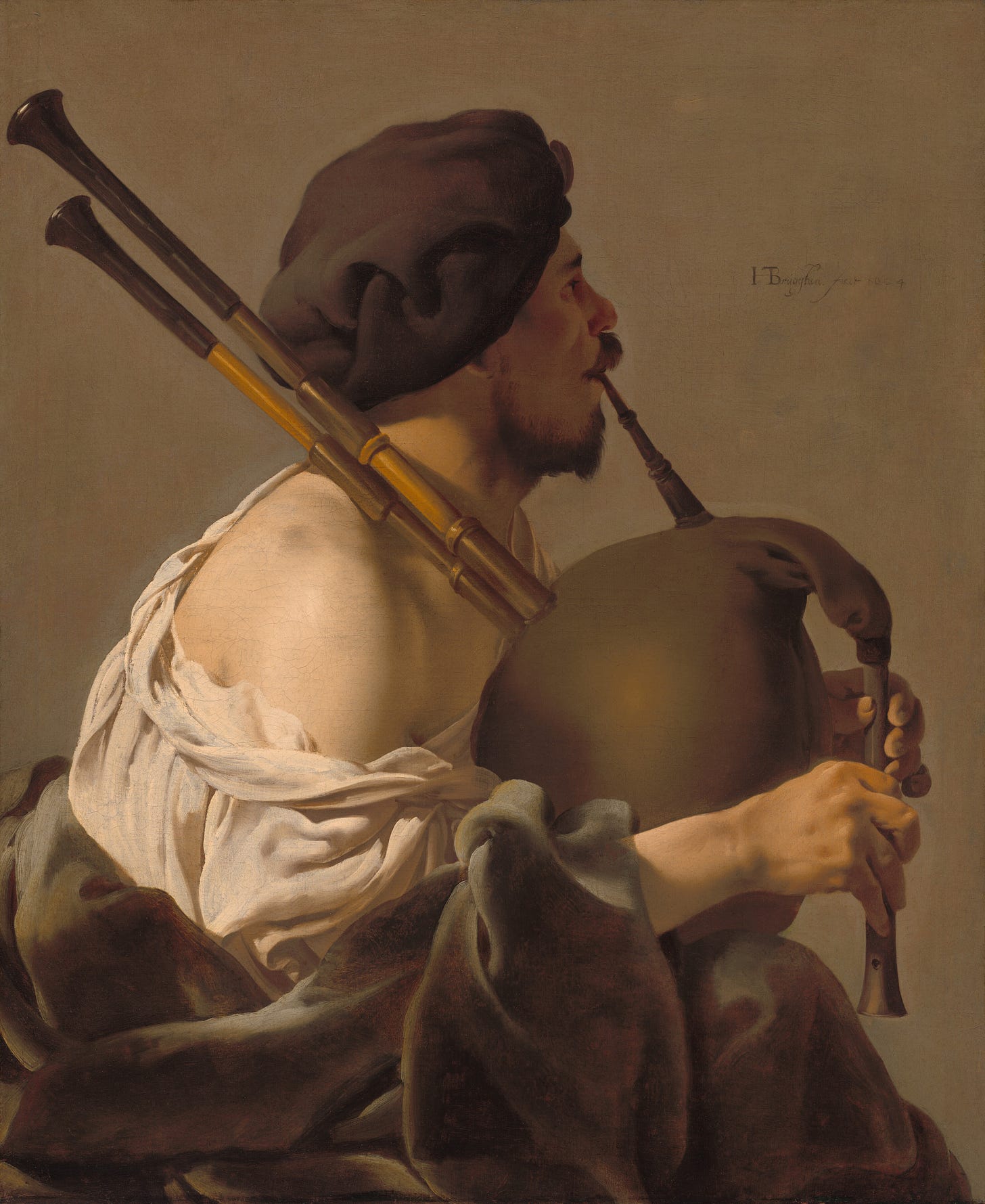Why Traditional Bagpipes Are Found in Every Corner of the World
One principle, endless traditions

Standing in the National Piping Centre's museum in Glasgow, surrounded by the expected displays of Highland regalia and Scottish piping history, I found myself drawn to a particular case that stopped me in my tracks. Row after row of bagpipes filled the display – Polish dudy with carved decorations, Hungarian duda with curved drones, Italian zampogne sprouting multiple chanters, Spanish gaitas in different sizes. The sheer variety was staggering. I counted instruments from over a dozen European countries alone.
The scale of it got me curious. How does any instrument achieve this level of global saturation?
The earliest evidence of bagpipes comes from the ancient Middle East - a Hittite stone carving from around 1000 BCE in Anatolia (modern-day Turkey) shows what appears to be a bagpipe player. Ancient Egyptian sources describe "pipers of Thebes" around 400 BCE playing instruments made from dog skin with bone chanters. The technology likely emerged in several places independently, wherever people combined animal skins with reed pipes.
The Greeks and Romans then carried these instruments westward. Emperor Nero famously played bagpipes (not the fiddle), and Roman legions used them as military instruments. As the empire expanded, bagpipes spread across Europe, North Africa, and the Middle East. But rather than creating identical copies, each region adapted the basic concept to their own musical needs.
By medieval times, the Old World had become a vast laboratory of bagpipe evolution. From the Balkans to the British Isles, from Scandinavia to North Africa, distinct regional varieties emerged. The museum's European collection alone showed mind-boggling diversity. The Hungarian duda produces mournful sounds that match Magyar musical traditions. The Galician gaita cuts through Atlantic winds with its bright, assertive voice. The Italian zampogna's multiple chanters let shepherds play harmony with themselves.

Looking beyond Europe, the pattern continues. India has multiple bagpipe traditions – some ancient, like the sruti upanga used in classical music, others adopted from British military pipes and transformed into the mashak. Pakistan became such an enthusiastic adopter that it's now one of the world's largest bagpipe manufacturers. North Africa has the mizwad, Turkey the tulum, Iran the ney anban. Each design reflects centuries of local evolution.
Why such universal success? The bagpipe solves a fundamental problem elegantly: how to make continuous music with a wind instrument. The bag acts as an air reservoir, letting players maintain constant sound while breathing normally. It's such a practical solution that cultures probably invented it independently multiple times.
The materials help explain the spread too. Almost any agricultural society had what they needed: animal skins for the bag, wood or bone for pipes, reeds from local plants. Communities could build and maintain their own instruments without depending on trade networks or specialised materials.
What struck me most in that Glasgow museum was the persistence of local varieties. The industrial age should have standardised everything, but regional traditions held firm. Bulgarian wedding bands insisted on their specific gaida sound. Galician musicians stuck with their traditional gaita. Even as modern instruments offered easier alternatives, communities maintained their particular variants.
The 20th century brought surprising revivals. Young musicians sought out elderly players, learning techniques on the verge of extinction. They documented construction methods, experimented with synthetic materials, formed teaching organisations. The Bretons created entirely new ensemble formats. The Swedes revived the säckpipa after it had been dead for 150 years.
Today's bagpipe map defies easy categorisation. Japanese pipe bands participate in St.Patrick's Day parades. Galician gaiteros collaborate with electronic artists. Turkish tulum players post tutorials on YouTube. Someone in Brazil can learn Macedonian gaida ornaments from their laptop.
Standing in that museum, surrounded by this global family of instruments, I realised I was looking at thousands of years of musical evolution. Each variant had adapted to its environment; loud pipes for mountains and battlefields, quiet pipes for indoor dancing, complex pipes for professional musicians, simple pipes for shepherds.
The collection demonstrated how human ingenuity takes universal concepts and makes them local. Every culture that encountered the bagpipe, whether through trade, conquest, or independent invention, asked: how can we make this serve our music? The answers varied wildly, but the underlying principle remained constant. Air reservoir plus reed pipes equals continuous music. Everything else was negotiable.
That display case held more than historical curiosities. It showed how the best technologies spread; through adaptation rather than imposition. The bagpipe conquered the world by allowing itself to be reinvented everywhere it went. One brilliant idea, hundreds of expressions, all of them right for their place and time.


